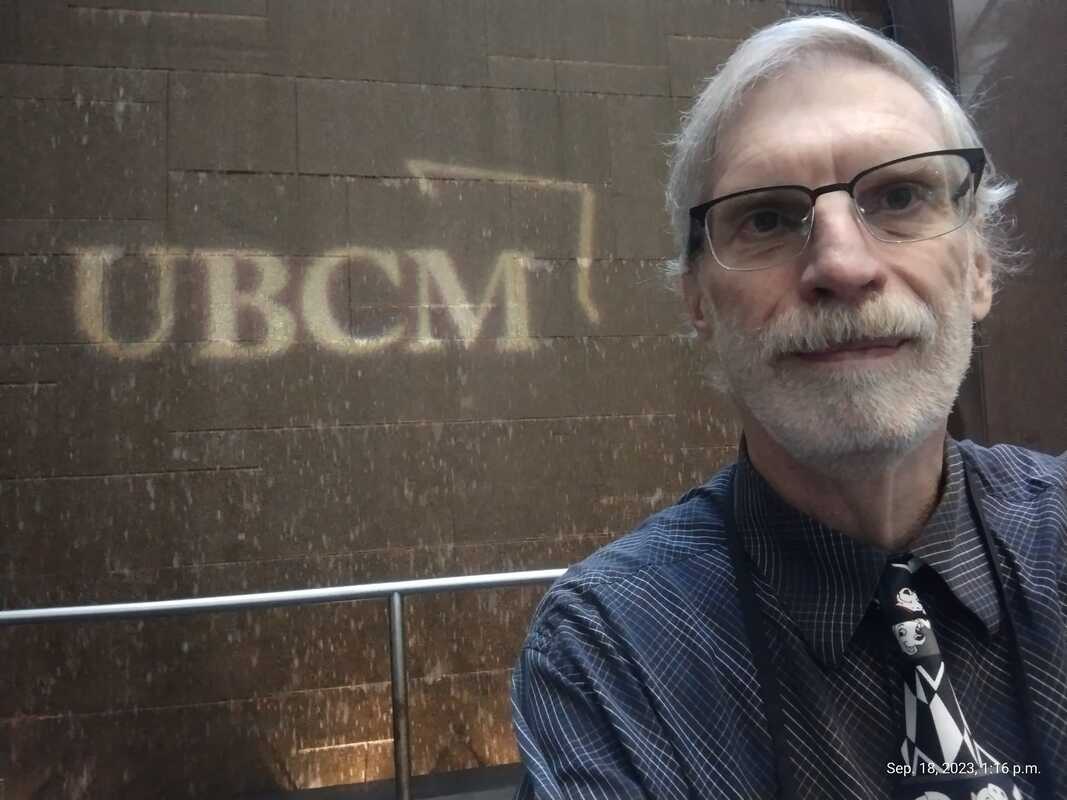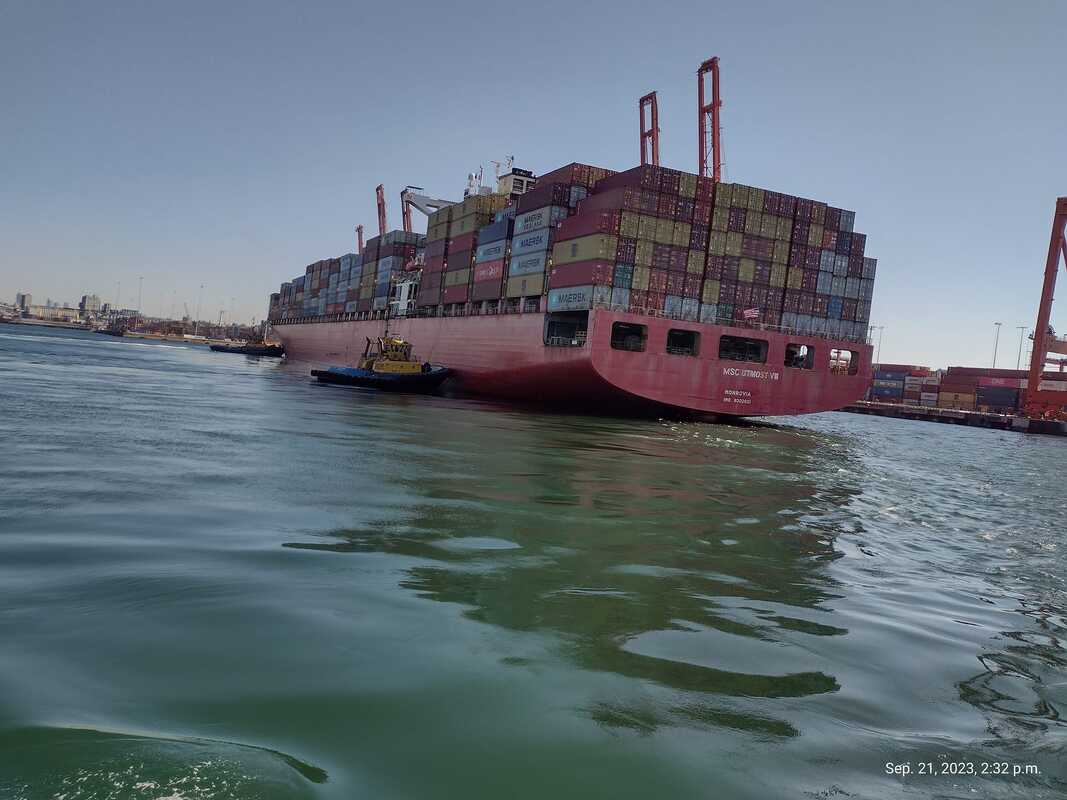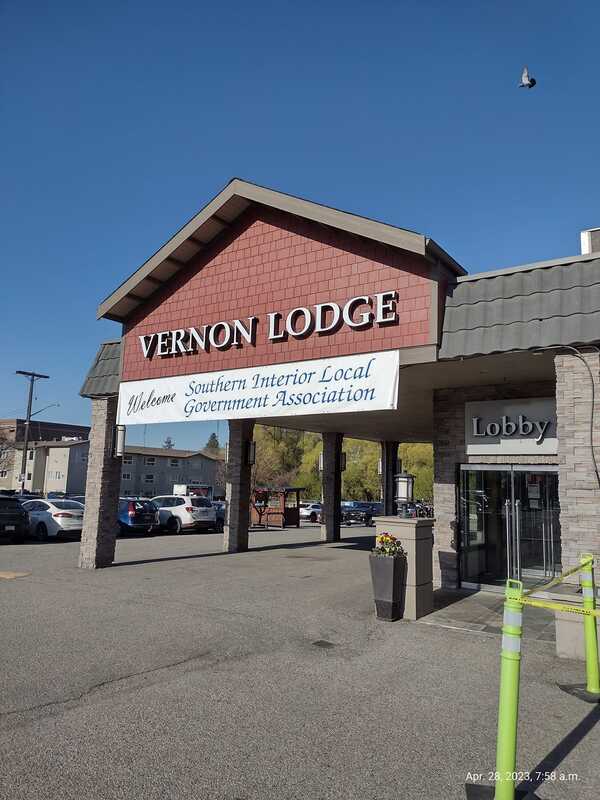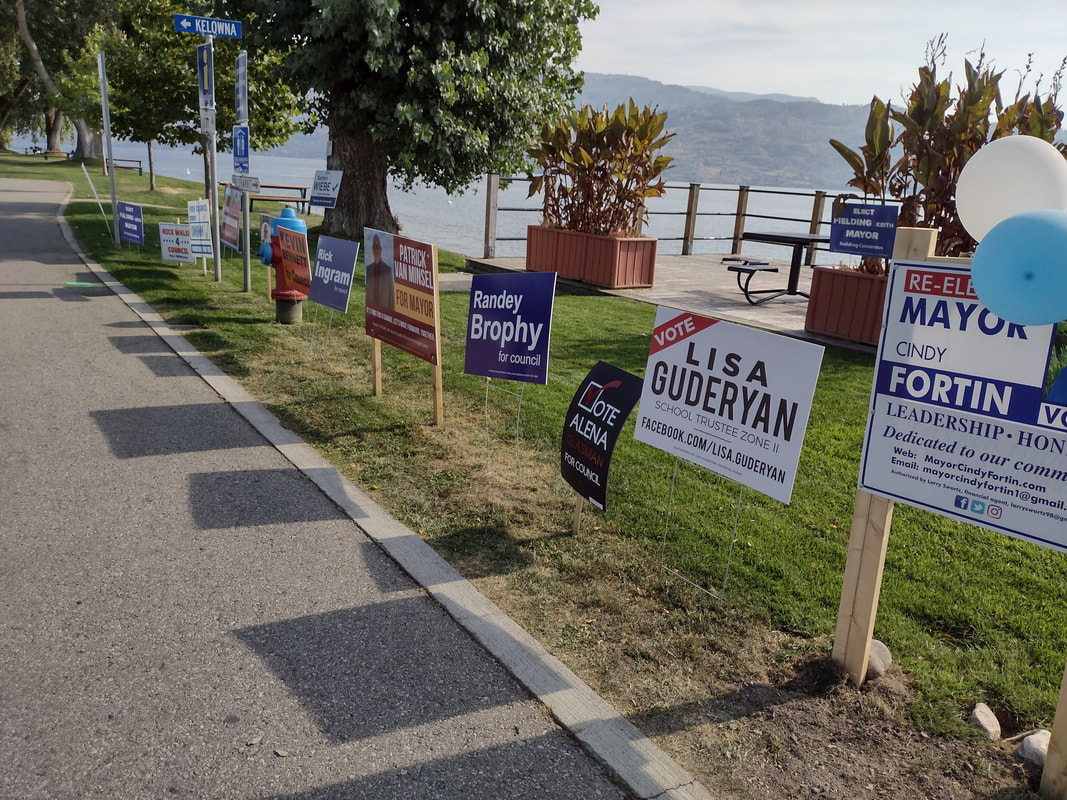|
September is convention time for municipal elected officials. The big event during the month is the UBCM Conference and Election of Officers. It is commonly just referred to as “UBCM” which stands for the Union of British Columbia Municipalities. It is an event that attracts Mayors, Councillors, CEOs, and CFOs from communities all over the province.
UBCM 2023 ran from September 18 to 22 and was hosted at the Vancouver Convention Centre. The theme this year was “Balancing Act” and with the type of schedule we had, it was the perfect theme. It was the third UBCM for all of us on the Princeton Town Council. Our first was in Vancouver in 2019, the 2020 and 2021 events were virtual due to the pandemic, and the 2022 conference was in Whistler. Regardless of the venue, the organizers always put on a first-class event filled with interesting workshops, sessions, presentations, and social activities. My schedule was fairly full as I wanted to attend as many sessions as possible however, scheduling conflicts with meetings planned with ministry officials cut into those plans. Here is a brief rundown of what UBCM was for me. Sunday, September 17 I got to Vancouver in the early evening. Traffic was backed up due to an accident outside of Abbotsford, so my arrival was later than I had expected. I got checked into the hotel and settled by 6:30 PM. I took it easy that evening taking a walk in the neighbourhood and ending up on the seawall. It was a nice way to start a week in Vancouver. Monday, September 18 I attended a couple of two-hour sessions during the day: “Building Economic Resiliency” and “Building Homes, Building Communities.” I had a third event booked, but could not make it. Our first ministry meeting was in the afternoon and was with Bruce Ralston (Ministry of Forests) and his staff. The evening featured a reception hosted by FortisBC. I finished the day with another walk on the seawall. Tuesday, September 19 This was one of our busiest days. I attended the “Small Talk Forum” and had to leave near the end to be with the rest of council at our second ministry meeting with Josie Osborne, Minister of Energy, Mines, and Low Carbon Innovation. That was quickly followed by our third meeting with Pam Alexis, Minister of Agriculture and Food. I attended the “Small Talk Forum Lunch” and then in the afternoon, went to our fourth meeting with Nathan Cullen, Minister of Water, Land and Resource Stewardship which was followed by our fifth meeting of the conference with BC Premier David Eby. I went for another seawall walk in the early evening and enjoyed some social networking afterward at the “Welcome Reception.” Wednesday, September 20 Today was a bit of a working day for me as I took a couple of writing projects with me and spent the morning completing them. I attended the SILGA (Southern Interior Local Government Association) lunch. I had been at the annual SILGA Convention this past April in Vernon. Our sixth meeting was with Ravi Kahlon, Minister of Housing and our seventh meeting of the week was later in the afternoon with Ministry of Transportation and Infrastructure staff. I checked out the massive UBCM Trade Show, fit in another seawall walk, and attended three different receptions in the evening. I started at the one hosted by the BC Government, then headed over to one hosted by COFI (BC Council of Forest Industries), and finished at the CUPE (Canadian Union of Public Employees) reception. These receptions allow me to meet other municipal officials from different parts of BC, share ideas, and generally socialize. They also bring me in contact with delegates I’ve met at other conferences so we can catch up or renew friendships. Thursday, September 21 In the morning, I attended our final meeting of UBCM with Brenda Bailey, Minister of Jobs, Economic Development, and Innovation. The “minister meetings” give us a private 15-minute audience with a provincial government minister and/or staff to discuss various issues of concern to our community. They often produce various levels of success and, according to our Mayor at the October 5 regular meeting of Town Council, there has already been some follow-up from more than one of our meetings at UBCM. I attended the Delegate's Lunch and a wonderful Port of Vancouver Harbour Tour where delegates were shown the shipping activity in Burrard Inlet. The evening featured the UBCM Reception, and I finished the night at the UBCM Banquet. Friday, September 22 The final day of UBCM is usually just a morning of keynote speakers. I opted to skip that so I could head home early like many of the over 2,000 delegates who attended the 2023 event. My usually good sense of direction failed me and it took me an hour to get out of Vancouver. I was quite happy to pull into my driveway in Princeton later that afternoon. Conclusion Although there are many social activities planned during UBCM, there are as many business items, meetings, and important events included. For me, I find importance in the “minister meetings” where we sit as an entire council team with a minister and staff to discuss matters that impact our local citizens. These meetings give us a forum that is more direct than an email, phone call, or video chat. They also foster dialogue and collaboration. I also find importance in attending key sessions and always try to sign up for ones that have some connection to the needs of our community. It is challenging to attend everything provided at one of these conferences, but whatever you fit in is always worth it.
0 Comments
From April 25 to April 28, I was in Vernon. I was the second delegate from Princeton in attendance at the 2023 SILGA AGM and Conference held in the Prestige Vernon Lodge. I was not originally scheduled to be at this event but had the opportunity when another member of the Princeton Town Council could not make it.
I arrived in Vernon during the noon hour on the first day (April 25). Instead of participating in one of a few different field trips planned for delegates, I chose to attend two presentations. The first one was “Climate Change and the Future for Water in the Okanagan” which was hosted by the Okanagan Basin Water Board. The second one was “Syilx Leadership for Protecting Water" and it was presented by the Okanagan Nation Alliance and Okanagan Collaborative Conservation Program. Future flooding potential was the main point of both sessions. The evening ended with a social event for delegates to network, mingle, get to know each other, or re-establish contacts. I found myself sitting with delegates from Keremeos for most of the conference. However, I did reconnect with peers from Peachland, Lake Country, Salmon Arm, Vernon, Kelowna, Oliver, Osoyoos, and the surrounding region. Day 2 (April 26) I missed most of it as I had a previously scheduled series of medical appointments in Kelowna to attend. I did get back to Vernon in time to attend the evening Welcome Reception, which provided more networking opportunities. Day 3 (April 27) I spent all day from 8:00 AM to 4:00 PM in the conference centre. The day included the SILGA Annual General Meeting, election speeches, elections, and numerous AGM reports. Sessions attended during the day included a “Trans Mountain Project Expansion Update” where we learned that the project is just about complete with the taps set to turn on soon. Later in the morning was a presentation on the “Canada Community Building Fund Renewal” and before lunch, the Chief Economist for the BC Real Estate Association presented a session titled, “The Path to Recovery in the Housing Market.” The afternoon was full of presentations from the BC Lottery Corporation, one on “Planning and Response to Climate Related Events,” and “The Elected Official Role in Planning and Development.” I also attended a breakout session titled, “The 13 Things Local Governments Need To Know for Successful Economic Development.” One of the presenters, Dale Wheeldon of the BC Economic Development Association, referenced Princeton several times in his slide show as an example of what to do to attract economic development. His presentation contained many photos of Princeton and he praised both Princeton Mayor Spencer Coyne (who was also at the conference) and Princeton Director of Economic Development Gary Schatz for their post-flood economic recovery plans and marketing programs attracting people back to our area. The evening ended with a banquet and dance with live entertainment. I called it a night shortly after the band hit the stage. Day 4 (April 28) Started with BC Assessment’s Graham Held presenting his slide show “Overview of Property Assessment and 2023 Assessment Roll.” I had seen this in early March when I was in Kelowna for the LGLA (Local Government Leadership Academy) conference. I also sat through the presentation titled, “Media 101: Setting Yourself Up For Success” where I heard a few delegates lament the bullying they experience from their local media and panelists explaining the evils of having a presence on social media. I disagree with most of what they said simply because, in a small community like Princeton, social media is active (sometimes overactive) but an effective tool for communicating important local government information to taxpayers. It also provides a valuable link between taxpayers and elected officials. Although the number of us engaging in social media activity locally is quite small, I know from my years in the media industry how to use it for what I need and admit that it gives locals better access to me, if they need to reach me for something. The morning finished with greetings from BC Liberal (United) Official Opposition MLA Dan Ashton of Penticton and words from the Honourable Anne Kang, Minister of Municipal Affairs. I left Vernon during the noon hour and got back home in the early evening as I had a few stops to make along the way. I enjoyed attending this, my third SILGA AGM and Conference. I was at last year’s in Salmon Arm and attended the last pre-COVID event in Penticton in 2019. My takeaways are many. What I learn more than anything else at these events is that regardless of the size of the community in the southern interior, we all share the same issues and by working together, and using the SILGA platform to advocate, changes can come. I was asked the other day why I don’t have election signs covering street corners and intersections. Well, the simple answer is that I’m not interested in contributing to the sign pollution we already face daily. Plus, those signs are not cheap. The last time I priced them (out of curiosity) they were $25+ each. I think that’s too much to spend for the ROI (return on investment). However, both good and bad arguments revolve around election lawn signs.
The Good… According to Vincent Raynauld, election signs “have a great appeal, especially for voters who are shifting away from text-based communication.” Raynauld is an affiliate professor of communication studies at the University of Quebec Trois-Rivieres. He goes on to say that lawn signs are perceived by people as they drive by them, and since they don’t normally have time to slow down and read what is on the election signs they see, the visuals become more important. Raynauld adds, “these visuals tend to speak to people’s emotions…good visuals that are very appealing might push things over the edge and might convince people to go out and vote.” More on visuals in a minute or two. The Bad… Election signs tend to become targets. They get vandalized. They get stolen. I attended a meeting in Kelowna last week with 20 other elected officials representing communities up and down the valley. The topic of election lawn signs came up. One election candidate from the North Okanagan had indicated that her sign budget was getting stretched as she had a total of eight signs stolen over the previous week. Another candidate from the South Okanagan explained that he was recycling signs from his previous election bid from 2018 and had only so many available to use that weren’t defaced. Do Election Lawn Signs Work? According to Mount Royal University (Calgary) political scientist Duane Bratt, they do pay dividends. The research he conducted showed that the more lawn signs a certain candidate has, the higher the voter turnout is. With more voters going to the polling station, the better chance the candidate with the most signs has of getting elected. Bratt explains, “Imagine a person who’s not following the election very closely, and they see lots of signs for one candidate. That becomes a kind of momentum, and they believe that while everyone else seems to like this person, maybe I should vote for them, too.” What Do I Think? Hmmm. Let me see. The current Princeton Town Council contains five elected officials (1 Mayor, and 4 Councillors). Three candidates were running for Mayor and 15 running for Councillor in the 2018 municipal election. Of the current Town Council, two members did not have lawn signs as part of their election campaign. Fast forward to 2022. 8 candidates are running in this municipal election (2 for Mayor, 6 for Councillor). I am the only candidate not using lawn signs as part of my election campaign. I still don’t think lawn signs are going to impact a small-town municipal election. That’s just my opinion. How To Design The Perfect Election Lawn Sign Okay, let’s look at the visuals. Believe it or not, there is a great deal of science behind the design of the perfect election sign. Considering I have 40+ years of experience in media marketing and several years in graphic design, I think I can safely speak on this and offer some valuable insight. Colours The first thing I would decide on is the colour combination I would use on my signs (if I were to purchase any). At the top of my list would be black on yellow. The second would be white on red. Those two choices top my list simply because they are the colour combinations used for traffic signs and we are all programmed to look at signs with those colours. White on green would work, black on white, or white on black. I would steer clear of more than two colours on any election lawn sign. Font The font is the shape of the letters that appear on your sign. I would stick to a sans serif font (a font where the letters do not have fancy edges to them), and choose one with thick enough lettering that it can be read easily from a short to medium distance. I would also stay away from mixing more than two fonts. Content Content is the information that appears on the lawn sign. I am a firm believer in the keep-it-simple rule. On my way to that meeting last week in Kelowna, I saw all kinds of election lawn signs. Of them, I could read only about 10 percent of them. The majority of them were too wordy. I can’t read that much information from a lawn sign as I’m driving by at 100 kph. However, there was one sign design in Peachland that stood out to me. It was a thick font, black on orange. This is what it said: “(Candidate’s name) FOR COUNCIL.” The name was on the top line, the “for Council” below it. That’s all you need on an election sign. You do not need your photo. You do not need to list your qualifications, your platform, your personal information, your contact details, etc. If I had election signs, mine would be black on yellow and all they would say is “GEORGE ELLIOTT FOR COUNCIL.” Short, simple, and to the point. *Elections BC requires signs to include a short line that says "Authorized by (name, phone number)" but it can be very, very small. How Do I Know It Will Work? I’m a freelance writer. I used a short black-on-yellow message in the advertising of my writing service on a freelance platform I use. It was the only one like that and stood out in searches on that website. It stood out so much, that I was getting hired frequently for writing jobs. The number of jobs I received increased when I changed my marketing visuals to black-on-yellow. They have since dropped as I have changed the visuals again to a more information-based approach. I know the problem, too many words, and too much clutter. I may resurrect the black-on-yellow ad posts once again. Location Probably one of the most crucial aspects of election lawn sign use is where you put your signs. Elections BC has some guidelines on where they can’t be posted, but where will you get the best ROI for your signs? Here are some places I would use: Princeton Landfill A friend of mine suggested placing an election sign at the entrance to the landfill site. Since it’s municipal property, you shouldn’t post anything there, but I will modify my friend’s idea. I would post a sign opposite the landfill site facing it so that as you drive out of the landfill site and stop to enter Princeton-Summerland Road, you see the sign looking right at you. KVR I’ve already seen signs on the trail that cuts through town. I would post signs along there as the majority of people using that route are following the posted speed limit of 30 kph, if they are not on foot, and reading an election sign there would be easier with less distraction from other posters or signs. Any “T” Intersection Several places around town have what I would consider a “T” intersection. The best thing about these intersections is that you can’t miss something facing you as you enter the intersection before turning left or right. Corner Residential Lots There are neighbourhoods around town with a significant amount of foot traffic. Once you can identify such a location, see if you will be permitted to post your sign on the lawn of the home at the corner of one of these streets. Face the sign in the direction where foot traffic can see and read it as they approach the corner. In Conclusion Election lawn signs do serve a purpose provided they are designed correctly and placed in the right location. One thing is for sure, although you won't see my name on election lawn signs, you will find it on your election ballot. On October 15, please cast a vote for me, George Elliott. -- Article Source: CBC News September 2021 |
Details
AuthorMy name is George Elliott. I have been in the Media Industry since 1978. I spent 23 years in Broadcasting and worked in a total of six different radio stations located in southern British Columbia Canada during my career. In 2000 I switched gears and moved into the Print Media Industry at a small town, local weekly community newspaper. In 2004 I bought the paper and operated it with my wife, Brenda until July 2016 when we closed it. I launched a freelance web content and article writing business from my home in January 2014. Archives
October 2023
|




 RSS Feed
RSS Feed
